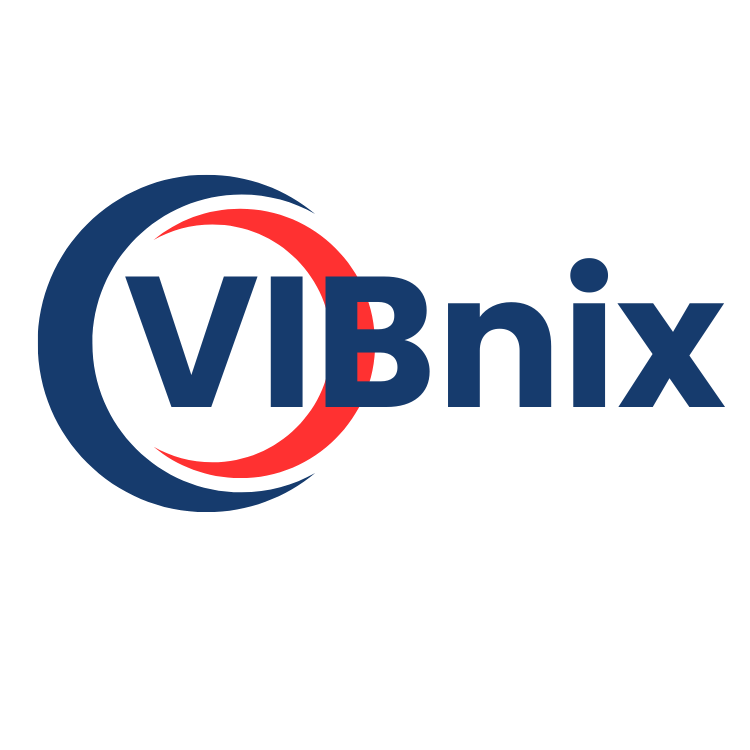How to Monetize a Website: A Complete Beginner’s Guide

Every website holds untapped potential to generate income, but knowing where to begin can be overwhelming. Learning how to monetize a website effectively involves understanding your audience, selecting the right strategies, and leveraging the best platforms. This guide will walk you through the essentials of website monetization, from identifying top online money-earning sites to implementing advanced techniques for selling traffic. By the end, you’ll know exactly how to monetize your website and turn your passion project into a revenue stream.
Understanding Website Monetization
Website monetization refers to the various methods you can use to earn money from the traffic and engagement your site generates. Whether you’re running a personal blog, an e-commerce store, or a niche news site, monetization transforms visits into value. The first step is realizing that every piece of content you create and every visitor you attract presents an opportunity to earn. Rather than chasing random “online money earning sites,” focus on integrated approaches that align with your brand and audience. Success comes from balancing user experience with revenue generation, ensuring that the methods you choose enhance rather than disrupt your visitors’ journey.
Why Monetize My Website?
For many beginners, the question of “should I monetize my website?” arises alongside more specific inquiries such as “where to monetize a website” and “what platforms can help me?” Monetizing your site can help offset hosting and development costs, fund future growth, or even become a full-time income source. When you see your website as an asset rather than a hobby, you open doors to strategic decisions that drive traffic and engagement while maximizing earnings. Carefully selecting a mix of monetization methods ensures that you’re not overly reliant on any single revenue stream, which in turn stabilizes your income.
Common Misconceptions
One widespread myth is that website monetization is solely about plastering ads everywhere. While display advertising can be lucrative, there are far more sophisticated, user-friendly strategies available on leading website monetization platforms. Additionally, many assume that substantial traffic is required before money can be made. In reality, with high-value audiences, such as niche hobbyists or industry professionals, even modest visitor numbers can yield significant returns through targeted affiliate partnerships or premium content subscriptions.
Exploring Monetization Methods
Selecting the ideal strategy for your site involves matching your content niche and audience behavior with a compatible revenue model. Below are some of the most effective ways to monetize my website without compromising quality.
Turn Clicks into Cash – Join Now!
Display Advertising Networks
Display ads remain one of the cornerstone approaches when it comes to website monetization. Platforms like Google AdSense, Media.net, and other website monetization platforms handle ad placement, auctioning impressions to the highest bidder. Once integrated, these networks automatically serve ads relevant to your audience, and you earn a share of the ad revenue. For beginners, display ads are attractive due to their ease of setup and passive nature. However, overloading pages with banners can lead to banner blindness or slow loading speeds, so careful optimization and testing are crucial.
Maximizing Ad Revenue
Understanding your audience demographics and content themes can help fine-tune ad placement. Use heatmap tools to identify high-engagement areas where ads can perform best without hindering user experience. Experiment with different formats—such as native ads, responsive display units, or in-text ads—to find the balance that yields optimal click-through rates and RPMs (Revenue Per Mille).
Affiliate Marketing
Affiliate marketing is a powerful way to earn by recommending products or services you trust. By partnering with reputable online earning platforms such as Amazon Associates, ShareASale, or CJ Affiliate, you can embed product links or banners within your content. When visitors purchase through your links, you earn a commission. Compared to display ads, affiliate marketing often delivers higher earnings per click, especially in niches with high-priced products or services.
Crafting Authentic Recommendations
Trust is the cornerstone of successful affiliate marketing. Whether you’re writing a product review, a tutorial, or a comparison guide, ensure your recommendations are transparent and based on genuine experiences. Disclose affiliate relationships and provide value by highlighting features, pros, and cons. This authenticity not only boosts conversion rates but also fosters long-term reader loyalty.
Sponsored Content and Partnerships
Brands are constantly looking to partner with websites that reach their target demographics. Sponsored posts, reviews, and brand collaborations allow you to charge a flat fee or a performance-based fee for content placement. Unlike display ads, sponsored content can be seamlessly woven into your editorial calendar, offering a more native experience for your audience.
Negotiating Deals
Approach potential sponsors with a media kit that highlights your traffic statistics, audience demographics, and past collaboration successes. If you’re just starting, consider offering discounted rates or even free content in exchange for exposure. As your site grows, formalize your rates based on metrics such as cost per click (CPC), cost per thousand impressions (CPM), or cost per action (CPA).
Digital Products and Online Courses
If you possess specialized knowledge or a unique skill set, creating digital products, such as eBooks, templates, or courses, can be highly profitable. Platforms like Teachable, Podia, and Kajabi serve as turnkey online earning platforms where you can host and market your content. Digital products not only offer high profit margins but also build your credibility and authority within your niche.
Structuring Your Course
A successful online course should be modular, interactive, and outcome-focused. Break down the material into bite-sized lessons, include multimedia elements like videos and quizzes, and provide actionable takeaways. Offering a free mini-course or webinar can serve as a lead magnet to attract potential buyers and demonstrate the quality of your paid offerings.
Memberships and Subscriptions
For sites with loyal, engaged audiences, implementing a membership model can create recurring revenue. Whether you offer exclusive articles, a private community forum, or premium tools, memberships encourage long-term commitment from your readers. Platforms such as Patreon, MemberPress, or Substack simplify the setup and management of subscription-based content.
Retaining Members
Regularly update exclusive content, host live Q&A sessions, and gather feedback to keep your members engaged. Creating tiers of membership—ranging from basic to VIP packages—allows you to cater to different budget levels and reward your most devoted fans with personalized benefits.
Selling Ad Space Directly
If you prefer control over your ad inventory, consider selling ad space directly to businesses. By offering fixed placements such as banner spots, sponsored widgets, or dedicated emails, you eliminate the middleman and keep a larger share of the revenue. This method often works best for high-traffic or highly specialized websites where direct advertisers see clear value in niche audiences.
Crafting Ad Packages
Develop tiered ad packages that detail placement, duration, and pricing. Offer discounts for long-term commitments and bundle ad space with other promotional services, such as social media shoutouts or featured newsletter spots. Providing case studies or testimonials from past advertisers can further validate your offerings.
Selling Website Traffic
Advanced webmasters sometimes choose to sell website traffic directly, particularly in affiliate or arbitrage marketing. Selling traffic involves redirecting a portion of your visitors to partner sites in exchange for flat fees or cost-per-click arrangements. While potentially lucrative, this strategy demands stringent traffic quality controls to ensure authenticity and compliance with advertising policies.
Ensuring Quality Control
Traffic brokers and buyers often require strict vetting to prevent bot traffic or invalid clicks. Use analytics tools to verify geolocation, session duration, and engagement metrics. Establish clear terms in your traffic-selling agreements, and maintain transparency with your partners to foster repeat business.
Choosing the Best Website Monetization Platform
With numerous options available, selecting the right website monetization platform can be daunting. Consider the following criteria when evaluating your choices:

Assessing Platform Reputation
Look for platforms with established track records, positive reviews, and transparent payment structures. Popular ad networks like Google AdSense dominate due to their reliability and extensive advertiser demand. However, smaller niche platforms may offer better rates for certain verticals.
Understanding Payout Models
Different platforms offer CPM, CPC, CPA, or revenue share models. Match the payout structure with your content strategy and traffic behavior. For example, content-rich blogs with high page views may thrive on CPM-based ad networks, while review-focused sites might yield more revenue through CPA affiliate programs.
Technical Integration and Support
Ease of integration is paramount, especially for beginners. Choose platforms with user-friendly dashboards, clear documentation, and responsive customer support. Some advanced networks require header bidding or custom scripts, which may necessitate developer assistance.
Optimizing Content for Revenue
Creating valuable content is the foundation of website monetization, but optimization ensures you capture maximum value from each visitor.
SEO and Keyword Strategy
Targeting the right keywords—such as “Online Money Earning Sites,” “Websites To Make Money,” or “online earning platform”—helps you attract visitors with strong monetization intent. Conduct keyword research to identify long-tail opportunities with high commercial value. Integrate keywords naturally within your headings, subheadings, and body copy, ensuring readability and relevance.
On-Page SEO Best Practices
Optimize title tags, meta descriptions, and image alt text to improve click-through rates. Structure your content with clear H2, H3, and H4 headings to guide readers and search engines alike. Internal links to related articles keep visitors on your site longer, increasing ad impressions and affiliate clicks.
User Experience and Engagement
A seamless user experience leads to higher engagement and better monetization outcomes. Ensure fast page loading times, mobile responsiveness, and intuitive navigation. Use analytics tools to monitor bounce rates, session duration, and conversion paths, identifying areas for improvement.
Visual Elements and Formatting
Breaking up text with images, videos, and interactive elements not only enhances readability but also offers additional monetization slots such as in-article affiliate widgets or sponsored graphics. Maintain a consistent brand style to reinforce trust and credibility.
Tracking Performance and Scaling Up
Monetization is an iterative process—continuous measurement and adjustment will drive growth.
Analytics and Reporting
Leverage Google Analytics, platform-specific dashboards, and heatmaps to track revenue metrics, such as RPM, eCPM, click-through rates, and conversion rates. Compare performance across different channels and campaigns to allocate resources more effectively.
A/B Testing
Experiment with ad placements, affiliate offers, and call-to-action copy through A/B tests. Small tweaks—like changing button colors or repositioning affiliate links—can yield significant uplifts in revenue. Document your findings to build a playbook of high-impact changes.
Expanding Revenue Streams
As your site matures, explore new monetization avenues such as podcast sponsorships, virtual events, or physical merchandise. Reinvent your offerings based on audience feedback and evolving market trends. Diversification not only boosts income but also minimizes risks associated with sudden changes in any single platform’s policies or payout rates.
Conclusion
Mastering how to monetize a website is both an art and a science. By understanding the fundamentals of website monetization, choosing the right methods and platforms, and continuously optimizing your content and strategies, you can transform your site into a sustainable income source. Whether you’re exploring online money-earning sites for beginners or aiming to sell website traffic to premium partners, consistency and value delivery remain your guiding principles. Remember that patience and experimentation are vital—revenue growth often accelerates once you have a solid framework and data-driven insights to inform your decisions.
Frequently Asked Questions (FAQs)
What is the easiest way to start monetizing my website?
Ans: Starting with display advertising networks like Google AdSense or Media.net is one of the simplest ways to monetize a website. These platforms automate ad selection and placement, allowing you to earn revenue from each ad impression or click without extensive technical setup. As you gain experience and traffic, you can layer on additional methods such as affiliate marketing and sponsored content.
How many visitors do I need before I can sell website traffic or direct ad space?
Ans: There’s no strict threshold, but most advertisers look for websites with consistent, quality traffic of at least a few thousand unique visitors per month. If your audience is highly targeted and engaged, such as specialized industry professionals or niche enthusiasts, you may command direct ad rates at lower traffic levels. Always verify traffic authenticity and engagement metrics to build trust with advertisers.
Which website monetization platform pays the most per click?
Ans: Platforms like Mediavine and AdThrive are known for higher RPMs compared to general networks, but they have strict entry requirements, typically requiring 50,000+ sessions per month. Affiliate networks also offer competitive payouts on a per-click or per-action basis, especially in high-value niches such as finance or software. Comparing multiple platforms and optimizing based on your niche will yield the best results.
Can I combine multiple monetization methods without compromising user experience?
Ans: Yes, combining revenue streams—such as display ads, affiliate links, and premium memberships—can maximize earnings while preserving user experience. The key is strategic placement and moderation: avoid overwhelming visitors with too many ads or promotions in a single view. Prioritize content quality and relevancy to keep your audience engaged and receptive to offers.
How do I choose between selling my own products versus using affiliate marketing?
Ans: Selling your own products or digital services offers higher profit margins and full control over pricing and branding, but it requires more effort in creation, support, and fulfillment. Affiliate marketing, on the other hand, allows you to earn commissions without product development overhead. Consider your resources, expertise, and audience preferences: if you have unique knowledge or a strong personal brand, creating your own offerings may be more rewarding in the long term.
- Vibnix Blog
- Politics
- News
- Liberia News
- Entertainment
- Technology
- Éducation
- Art
- Causes
- Crafts
- Dance
- Drinks
- Film
- Fitness
- Food
- Jeux
- Gardening
- Health
- Domicile
- Literature
- Music
- Networking
- Autre
- Party
- Religion
- Shopping
- Sports
- Theater
- Wellness



